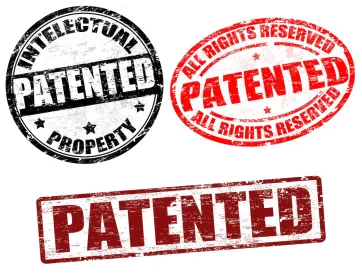The questions from the high court during oral argument at the end of March 2023 were fairly telling of the 9-0 ruling that came down yesterday in Amgen, Inc. v. Sanofi (No. 21-757). In fact, it did not come as much of a surprise when the Supreme Court left intact the lower courts’ invalidity ruling against Amgen and simultaneously affirmed a narrower-than-Amgen-wanted enablement requirement under 35 U.S.C. § 112.
Just as a quick recap from our latest post on this case, Amgen had asked SCOTUS to find that the Federal Circuit applied too high of a bar under the enablement portion of § 112 by requiring that a patent explain how to make virtually every possible version of the claimed invention that could perform the claimed functions. Amgen fought for a less stringent enablement requirement and contended that a patent need not account for the full range of possible forms the invention might take, but only “enable skilled artisans to ‘make and use’ the invention.”
The opinion — authored by Associate Justice Neil Gorsuch — explains that the claims-at-issue in U.S. Patent No. 8,829,165 and U.S. Patent No. 8,859,741 (which cover Amgen’s PCSK9-inhibiting cholesterol drug marketed as Repatha) do indeed fail to provide enough information allowing a person of ordinary skill in the art to replicate the full scope of the invention without undue experimentation. More specifically, the Court explained that
[i]f a patent claims an entire class of processes, machines, manufactures, or compositions of matter, the patent’s specification must enable a person skilled in the art to make and use the entire class.
. . .
That is not to say a specification always must describe with particularity how to make and use every single embodiment within a claimed class.
. . .
a specification may call for a reasonable amount of experimentation to make and use a patented invention. What is reasonable in any case will depend on the nature of the invention and the underlying art.
The Court further warned that “the more a party claims, the broader the monopoly it demands, the more it must enable.” Recall that the asserted claims in the ʼ165 and ʼ741 patents were not limited to the particular antibody used in Repatha (or even the 26 antibodies identified in the ʼ165 and ʼ741 patents). Instead, the claims more broadly require an entire genus of known and unknown antibodies. Using this framework, the Court explained that it had no doubt that the 26 exemplary antibodies identified by their respective amino acid sequences in the specification of the ʼ165 and ʼ741 patents were enabled. But it found the specification lacking with respect to how to make and use every other undisclosed but functional antibody such that a person of ordinary skill in the art would be “forced to engage in ‘painstaking experimentation’ to see what works.” As a result, the Supreme Court justices held that “[t]he courts below correctly concluded that Amgen failed “to enable any person skilled in the art . . . to make and use the [invention]” as defined by the relevant claims.”
While this marks the end of a nearly decade-old patent dispute, the case certainly provides a real-life example of the answer to the question frequently asked by clients:
“But, how can I be sued on my product when I have a patent that covers my product?”
Indeed, Sanofi (and Regeneron) has its own patents covering its PCKS9-inhibiting cholesterol drug (marketed as Praluent). In fact, while Praluent works similarly to Repatha in that the antibodies block PCSK9 (which inhibits the removal of bad cholesterol from the blood), it achieves the result with a different antibody having its own unique amino acid sequence. Regardless, a patent does not provide the right to make, use, sell or import an invention. Rather, it provides the right to exclude others from making, using, selling, or importing that invention. As such, Sanofi’s patent could not prevent Amgen from suing for infringement to enforce its rights under the ʼ165 and ʼ741 patents. Also, while many patents that are litigated are ultimately found to be invalid, these invalidity determinations typically come after a protracted, expensive battle in court (and possibly before the USPTO as well). After all, issued patents are presumed valid and the burden to overcome that presumption and prove invalidity is high. And, while not necessarily the case here, a patent can be granted on an improvement to an earlier invention that may still be covered by an enforceable patent in one or more countries. In short, Sanofi came out the victor in this fight, but it had to stay in the ring for quite a long time to knock Amgen out.




 />i
/>i

